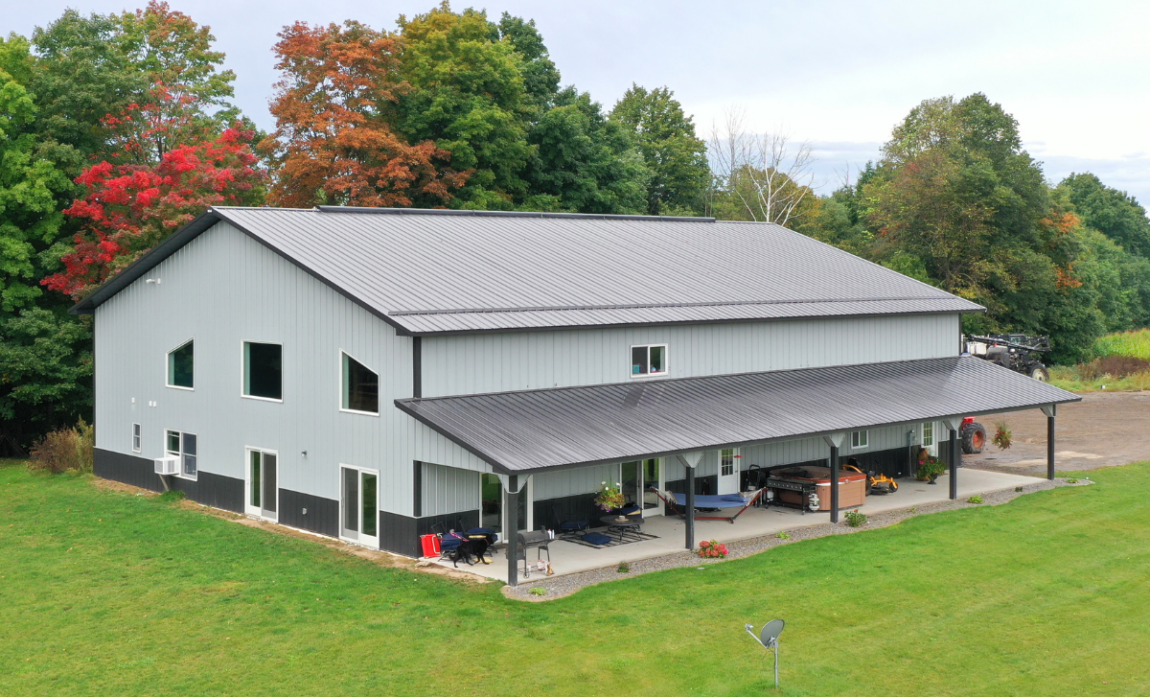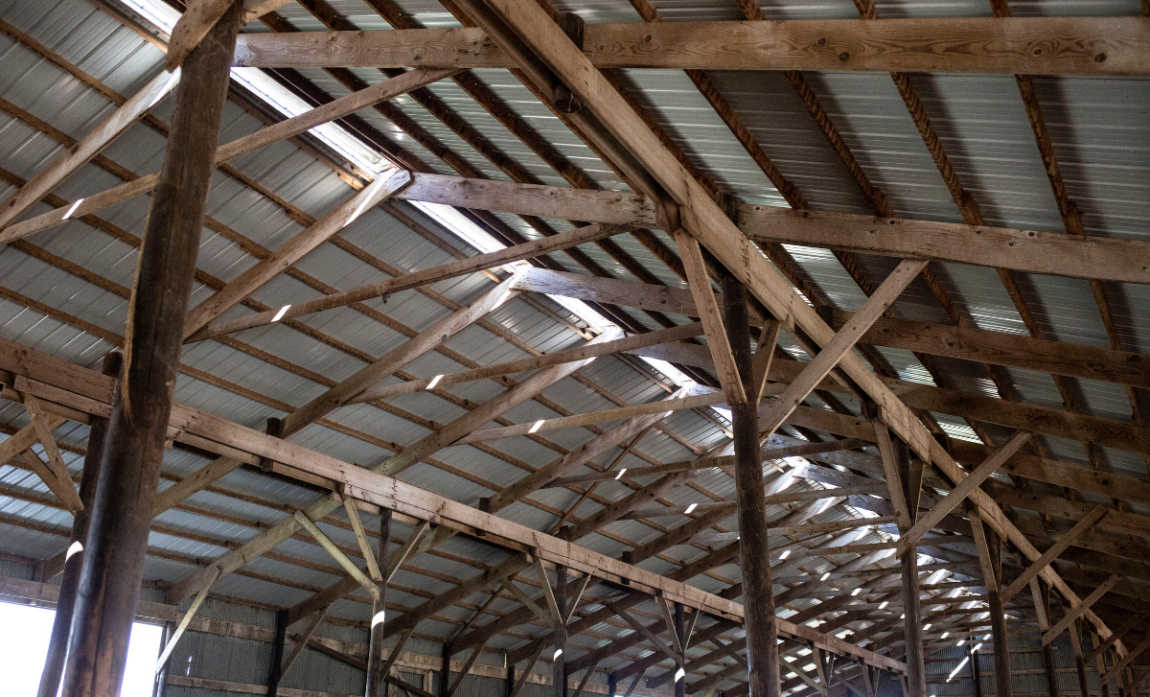Our rule of thumb for choosing the most effective pole barn size? Build bigger than you think you need.
“That may sound like biased advice,” says Tim Wick, a Project Sales Team Member at Wick Buildings, “but it’s really based on practical needs. And no one ever calls back after a project is done and complains their pole barn is too big.”
Learn the reasons behind the bigger-is-better perspective and see how it can help you choose a pole barn size you won’t regret.
1. Add Space to Compensate For No Basement Storage
One of the benefits of a pole barn is that it doesn’t require pouring a continuous foundation, such as a basement. This can simplify the construction process and lower overall costs.
But without a basement, Tim says you’ll want to include additional square footage in your pole barn for storage, especially if it’s a residential pole barn.
“Let’s say you’re thinking 2,200 square feet will work well for housing your family,” says Tim. “But you also need to think about where you’re going to put the golf clubs, the old toys and baby clothes, the Christmas ornaments, and all the other stuff that people in the Midwest typically keep in their basement.”
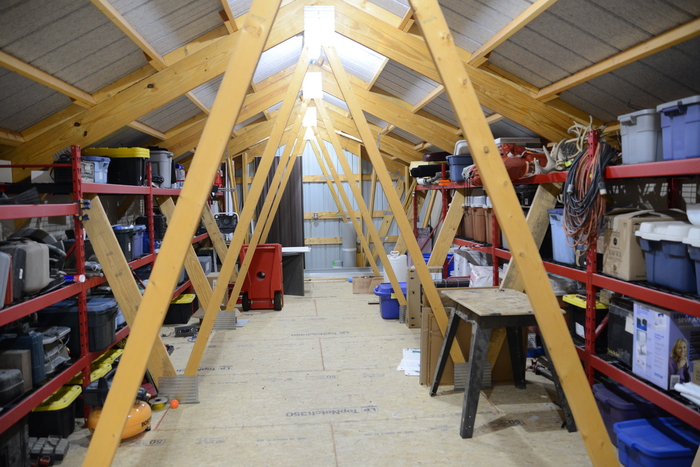
Note that there are also storage options such as a bonus storage area like the one pictured above. This is about 80% less expensive than expanding your floor plan.
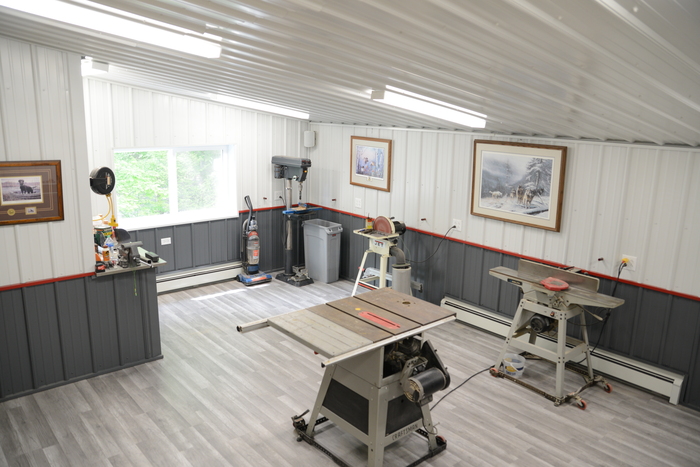
You can also have attic storage built (see photo directly above), which could actually be used as a finished room. (See also No. 3 below for related info on storage.)
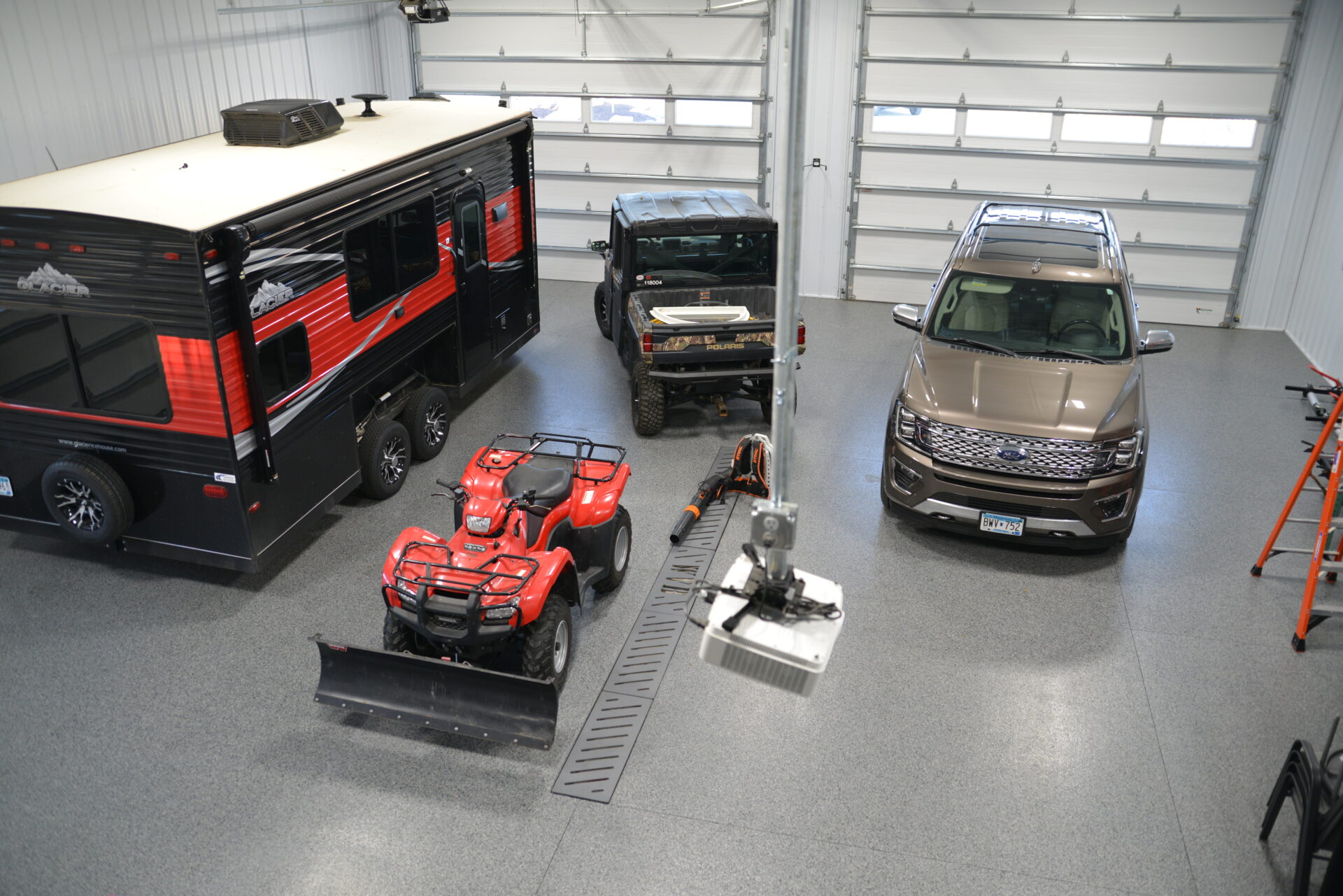
2. Think Carefully About “The Number One Dimension For Regret”
When it comes to storing large items like boats, RVs, or even combine harvesters, your pole barn obviously needs big enough door openings. And if you plan to have overheard doors – which are a popular option – you should also have at least two additional feet of overhead clearance.
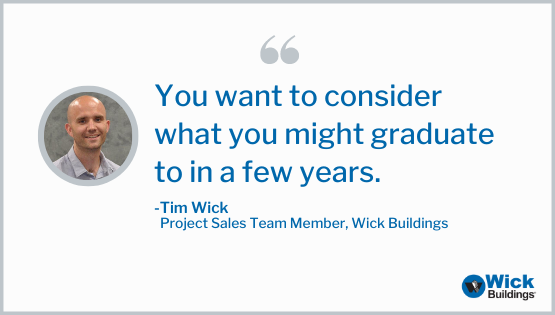
These factors will affect the decisions you make about the overall height of your pole barn. But Tim says you need to go a step further. “Don’t just think about your height needs in relation to the things you have right now. You want to consider what you might graduate to in a few years.”
For example, maybe you have an RV that requires a 10-foot door. But what happens if you buy a bigger one and can’t fit it in your pole barn? By opting for a 12-foot door and a taller building now, you’ll have leeway for future upgrades to your RV – and won’t be smacking your forehead wishing your building was taller.
In fact, Tim calls height “the number one dimension for regret,” adding that it’s also the most difficult dimension to modify after the fact. “It’s nearly impossible to add height. Apart from maybe a couple of unique situations, you may as well tear the building down and start over because of the expense it takes to do it right,” he says.
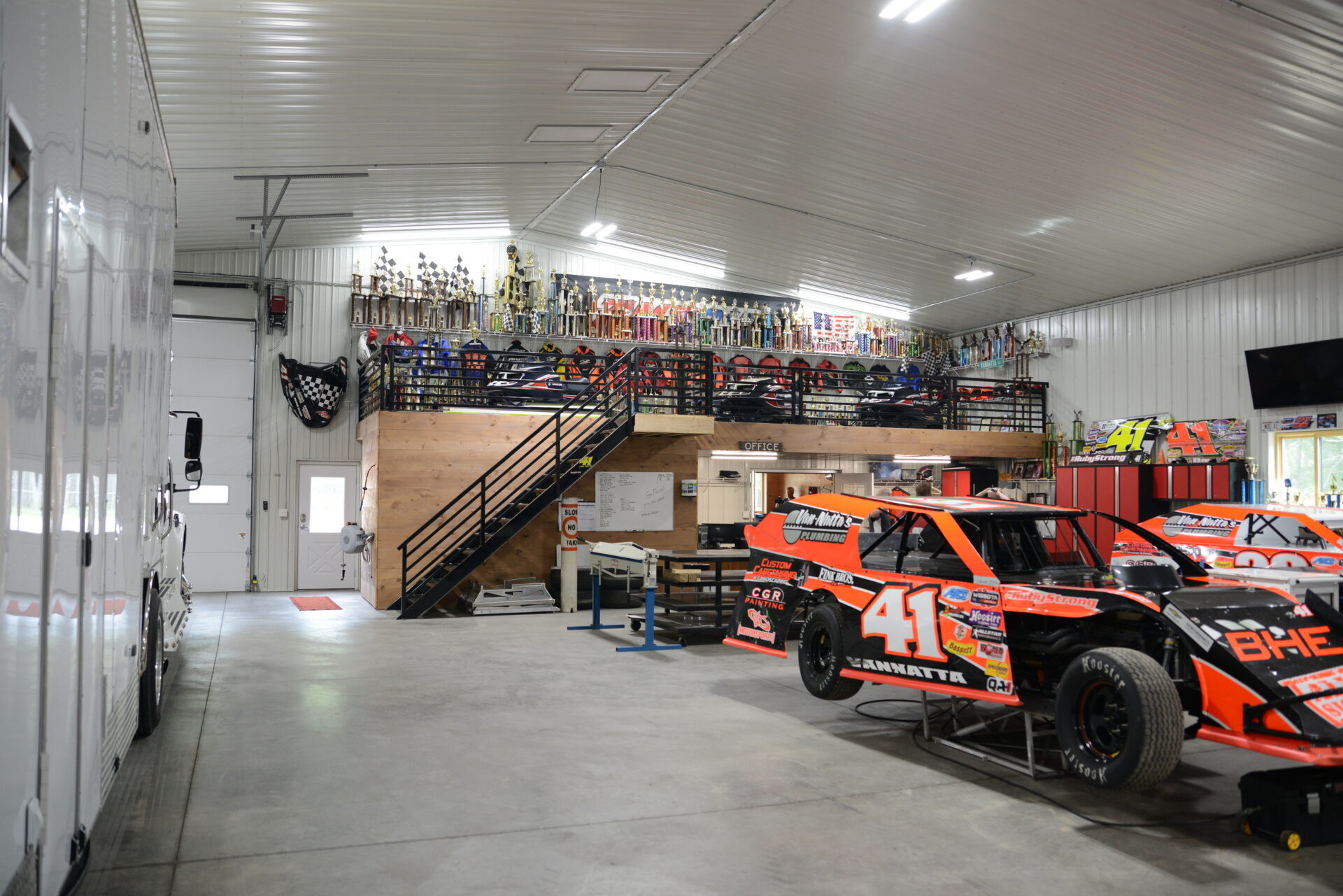
3. Think Ahead for Features Like Lean-Tos, Lofts, And Wall Racking Systems
Continuing with the topic of height from No. 2, more height can allow for useful features that add value to your pole barn. Lean-tos, lofts, and wall racking systems are great examples.
If you want to add a lean-to onto your pole barn for, say, an RV or a tall piece of farm equipment, having enough height is going to be critical. “When you come off the eve of a building, you lose height rapidly,” explains Tim. “So you’re going to want a building tall enough to actually allow for a lean-to to be built.”
As for lofts, Tim says the overhead storage they allow for still provides valuable floor space underneath.
When it comes to wall racking systems, Tim says these can work great for electricians, mechanics, HVAC companies, and similar businesses. “With a lift, they can easily access shelves that are 12-, 14-feet high in the air.”
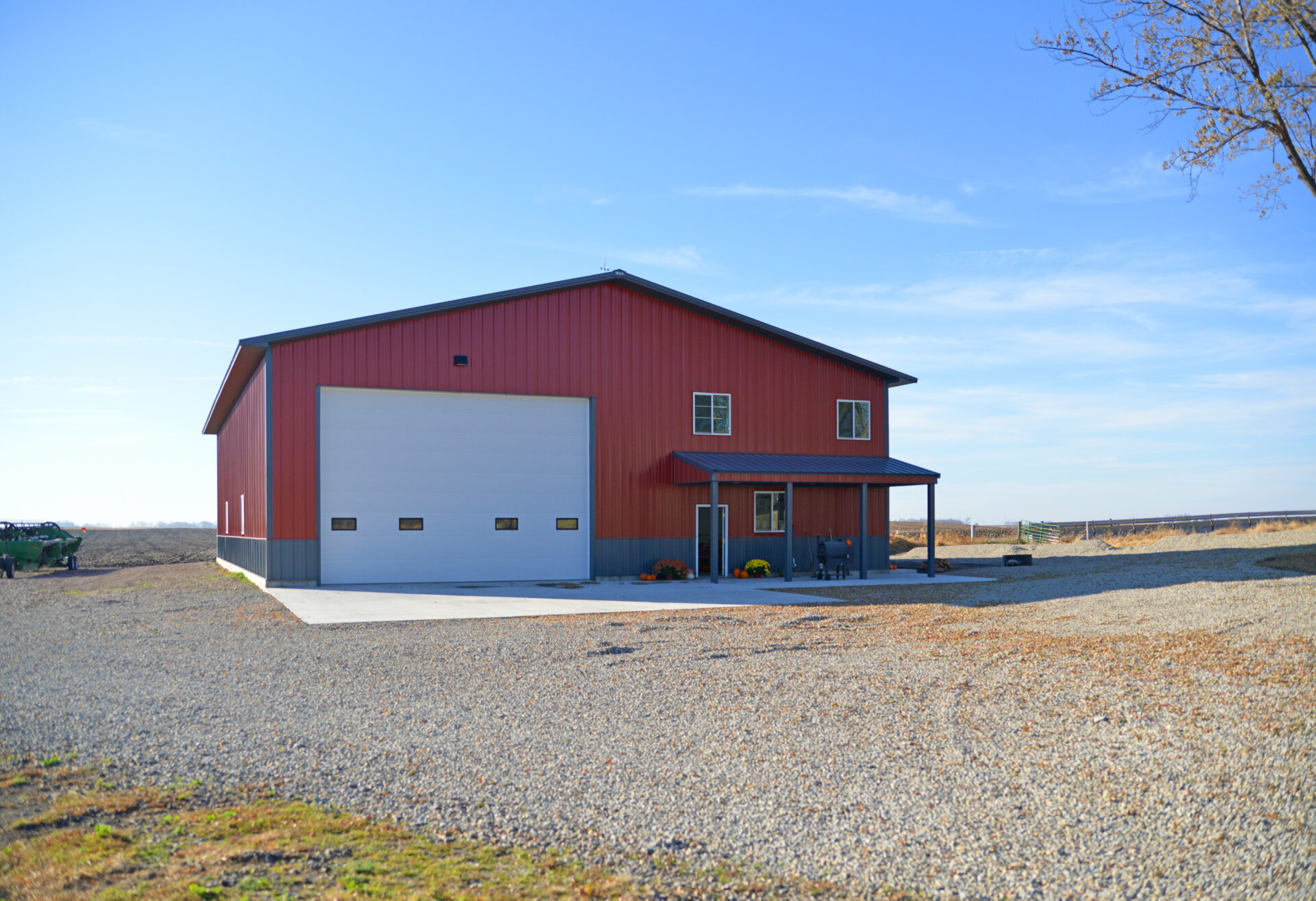
4. Compare Overall Cost vs. Overall Value
If you work with a pole barn builder, they’ll likely be able to build a structure in whatever size you want (within reason). But if you have some wiggle room in terms of your pole barn size, Tim says you may want to ask about the building dimensions that can give you better overall value.
For example, let’s say you’re thinking you want a 30-foot by 40-foot building, but a 36-foot by 48-foot version of that same building will cost $2 less per square foot because of the more efficient use of building materials.
“Sure, in real dollars you’re obviously going to pay more if you opt for the 36 by 48 building,” says Tim. “But the value you gain in ultimately having a pole barn that’s more than 30% bigger may be worth it to you.”

5. Locate The Building Strategically In Case You Want an Addition
Maybe your current budget won’t allow you to go bigger. But what about in five years? Another great advantage of pole barns is that they’re much easier to add on to compared to other structures.
Keep that in mind because your needs (and wants) may change as your paycheck goes up. And if your lot size is relatively small, you’ll want to be especially mindful of how you position your pole barn in relation to lot lines.
“Even when you commit to a pole barn size for now, it’s just smart to allow for the possibility of additions down the road,” says Tim.
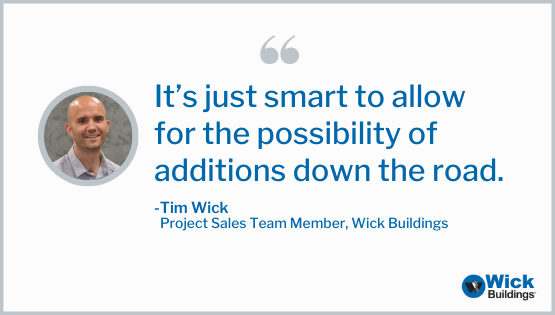
6. Don’t Build TOO Big
Legally speaking, the simple fact is that you can’t necessarily build anything you want, especially when it comes to size.
Be aware that size-related limits are more common in suburban settings. More specifically, many municipalities have maximum roof height restrictions. And, of course, no matter where you build, you want to be sure you don’t exceed the maximum footprint limit for total square footage.
Tim says it’s incumbent on the party acquiring the permits to make sure that building rules and regulations are followed.
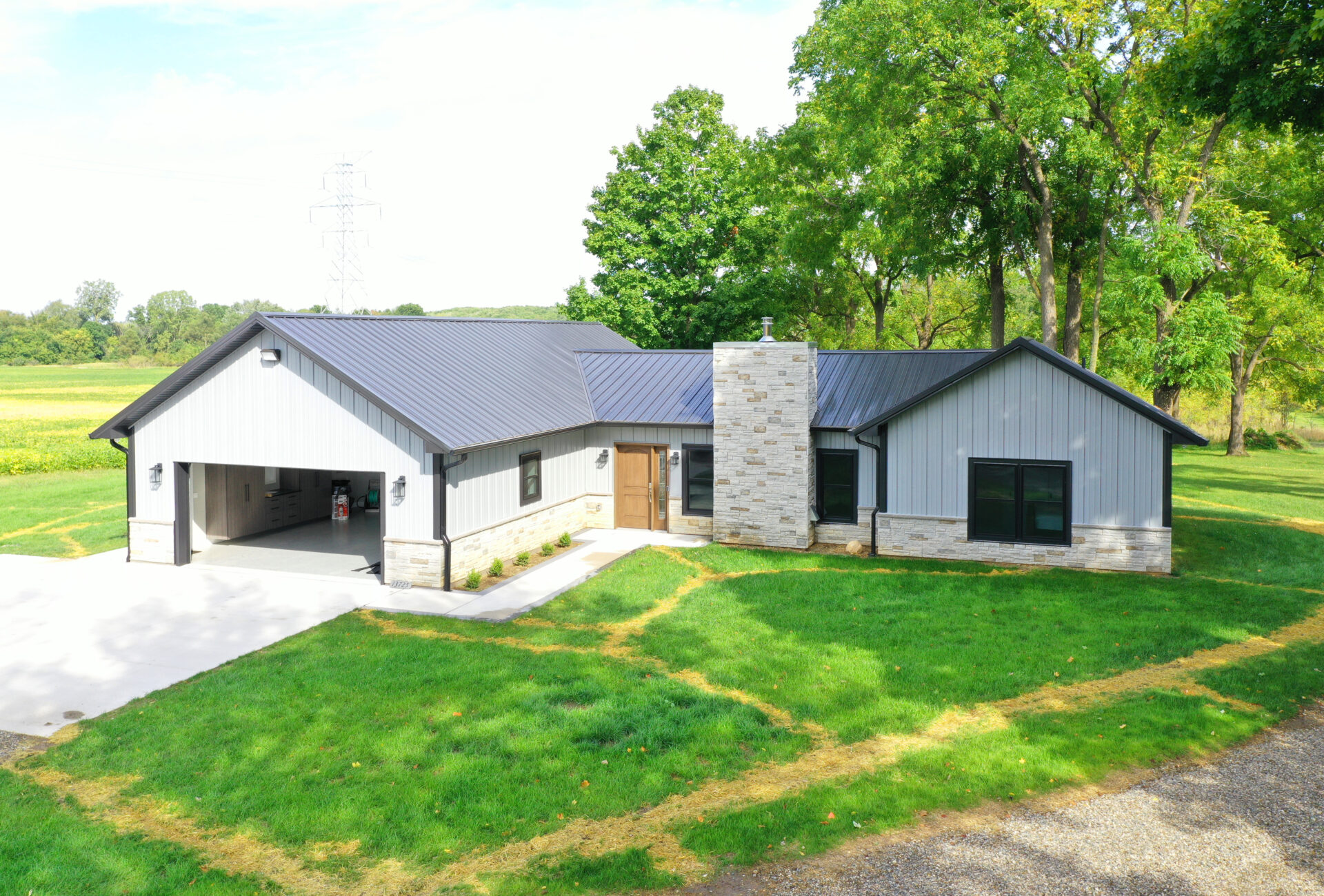
Start A Conversation With An Experienced Builder
Building a pole barn of any size is no small undertaking, and everyone has different timelines, capabilities, and budgets. The right design, the appropriate materials, and smart construction practices are essential for a functional, durable, and cost-efficient building.
If you’re serious about taking the next step, reach out to an experienced pole barn builder. As you share what you’re hoping to achieve with your pole barn, the builder will likely have insights to help you choose a pole barn size that you’ll be satisfied with for years to come.
If you’d like to learn more about having a pole barn built, be sure to contact Wick Buildings for more information.


